#Adrián’s HoME posts
Text

Stephen will be competing at 2023 Skate America International in Allen, Texas this week. The men's SP starts 7:53 PM CDT on Friday, October 20, and the men's FS starts 8:04 PM CDT on Saturday, October 21.
Stephen's first Grand Prix invite was actually to Skate America in 2020. Some of you may recall how sad and anxious we were when he had to withdraw, and he ended up missing that entire season. In his interview after winning 2022 Challenge he refused to discuss what his injuries were, only mentioning his frustration at having to withdraw in the Olympics site feature article. Thankfully he was able to heal and return to make his GP debut in front of a home crowd in 2022. Three years on he's finally getting to do this event. Let's get it done Stephen.
Also a request to anyone with access to Peacock: if you're able to share videos from the practices on October 19-21 that would be greatly appreciated. I would take care of this if I could. As a Canadian I cannot access that footage at all.
I wanted to make a correction about my misunderstanding about his free skate music. He is not actually skating to the soundtrack for the movie Time Lapse, his program is called Time Lapse as there are two different pieces of music he is skating to entitled that (one of them is also being used by Shoma Uno). The full break down of the music is:
Cernunnos by Christian Reindl & Lucie Paradis
Existir by Adrián Berenguer
Timelapse by Mari Samuelsen, Trondheim Soloists, Jesper Söderqvist & Gunnar Flagstad
Time Lapse by Michael Nyman
Links
Announcement
Schedule
Website
ISU web page
ISU results
Detailed results
Livestreams
SP: CBC, Radio-Canada, ISU
This post will be updated later.
Good luck Stephen!
4 notes
·
View notes
Text
Vuelve Revista Beatles al aire de Galena!. Comienza nuestra temporada Nº 12 y vamos a mostrar los Bonus Tracks 2023. Aquellas canciones no incluídas en los micros, especiales, secciones y suplementos que hicimos el año pasado. Mas alguna sorpresa como siempre.
Emitido el sábado 9 de marzo de 2024. 16.00 horas.
Idea y conducción: José Luis Banchio.
Sonido, Post Edición y Toque Mono: Adrián Zimmermann
FM Galena 94.5. Rafaela, Santa Fe. República Argentina.
Listado de canciones:
1 – (Just Like) Starting Over – John Lennon
2 - “Noche de perros” - Seru Giran (En vivo, Córdoba. 4/12/1992) – 433 – 11/3/23
3 – Viernes 3 AM – Seru Giran (En vivo, River. 30/12/1992)
4 – A Little Bit Me, A Little Bit You – The Monkees
5 – California Dreamin' – José Feliciano
6 – Tema de “La Mary” - Marikena Monti y Luis María Serra
7 – Love Theme “Sunflower” - Henry Mancini
8 – New Home In Moscow - Henry Mancini
9 – It's Only Love - Tina Turner y Bryan Adams
10 – Tearing Us Apart - Tina Turner y Eric Clapton -
11 – Eternal Flame - The Bangles
12 – The Look – Roxette
13 - Young and Dumb - Fanny
14 – Mary Had A Little Lamb – Stevie Ray Vaugham
15 – Jailhouse Rock – Queen (Live at the Rainbow – 1974)
16 – Rapper's Delight – The Sugarhill Gang
17 – Noche y día - Raúl Porchetto
18 – Bailando en las veredas - Raúl Porchetto y Sandro
19 – Solo le pido a Dios - Sixto Palavecino (en quechua
20 – La cultura es la sonrisa - León Gieco
Link del programa:
https://www.ivoox.com/revista-beatles-programa-n-475-audios-mp3_rf_125758978_1.html
https://rafaeladigital.com/noticias/revista-beatles-reproduccion-del-programa-no-475/?feed_id=5381
0 notes
Text
28 March, BOS @ SEA, 6-4, win, Opening Day
This is my second attempt at writing up last night’s game. Infrequency bred complacency and I forgot that the Tumblr app is not to be trusted when posting with limited WiFi service. So apologies for the tardiness of this. I’ve lost enough missives to technology to not get too hung up on trying to replicate word-for-word what I already wrote before. I don’t care what I wrote before. I’m sure, though, it went a little something like this….
Our long, bleak, seasonal nightmare is over folks. Baseball returns after the dark, the wet, and the cold. Much like the Red Sox ownership, I only paid cursory attention to baseball in the offseason. Paying respects to Tim Wakefield and celebrating Adrián Beltré was about it. So I was only slightly more active than the Red Sox ownership this offseason. That’s about as sick a burn as I give. So appreciate it.
So it’s sort of snuck up on me that baseball is back. And the Sox winning Opening Day? Well, for those new to this Tumblr, that cover photo is Dustin Pedroia hitting a dinger in the midst of the monumental comeback by the Sox in the 2010 Opening Day battle against the Yankees. That was the last opening day I attended. It was also the last ballgame I went to with my dad. I love opening day.
And I love that we won! We fucking won! We can still have a perfect season after one game (this is an optimist site, obviously, for realist sites go elsewhere). In fact, in spite of all the questions, and there are A LOT of questions, we won. And it was kind of a cool win, too. We took the lead. We didn’t lose the lead. Is it going to be like this all year? YES. no. But as far as the optimist side of this blog goes… yes! We’re not going to think about starting rotations, or ownership’s interest and commitment, or, um, everything else… we’re going to think about the bright sides and awesomeness…
Raffy hit a two-run dinger in the third, putting the Sox up kind of off-the-bat. It was a good dinger. And he didn’t make an error.
Ceddanne Rafaela hit a triple and scored a run on an awesome fielder’s choice that went wrong. Who scores a triple on opening day? That’s awesome!
Tyler O’Neill literally made history by becoming the first player to hit a home run in five consecutive Opening Day games. How fucking cool is that?! I even forgive him for coming from the NL Yankees for that (for those that don’t know, the Cardinals are the NL Yankees).
Connor Wong had a couple of hits and knocked in a run.
All of the Red Sox starting lineup had a hit. I shudder to think how infrequently that happened last year.
Brayan Bello had a decent start. He went five, gave up five hits on two runs. He didn’t walk anyone. He also had a shiny new contract which shows the ownership are aware that the team needs to perform going into the future.
Kenley Jansen, regardless of the doubt surrounding his Red Sox future, struck out two and got the save. He might’ve walked one but he looked locked in regardless. He’s here to play in spite of what’s happening upstairs.
We won!
We’ve got a perfect record! Until proven otherwise, we could have a perfect season!
Everyone else in the division won too… except Tampa Bay! Hah! fuck those guys!
Also fuck the Yankees!
And let’s win tomorrow!
1 note
·
View note
Text
jensen
template based on this post
Basics
Name: Jensen Adrián Ashfair
Birthplace: Idris
Places Lived: Idris, New York
Current Residence: New York
Birthday: February 14, 1995
Age: 11-12
Species: shadowhunter/nephilim
Appearance
Hair: light brown/dirty blond
Eyes: green
Height: 5'6
Clothing style: basic jeans, tshirts, sometimes basketball shorts if it's hot out. comfort over fashion
Face Claim: Bryce McKenzie
Family
Mother: Mollie Ashfair (deceased)
Father: Aric Ashfair
Sibling(s): Rowan Ashfair
Other Important Relatives: Patrick Penhallow (maternal uncle), Jia Penhallow (aunt), Aline Penhallow (cousin), Guinevere Verlac (maternal aunt), Émile Verlac (uncle), Sebastian Verlac (cousin), Élodie Verlac (aunt through marriage)
Closest Friends: Max Lightwood, Emma Carstairs, Julian Blackthorn
Romantic interest: none
Past Relationship(s): none
Personality
Jensen is, in a word, a lover. He's never been a fan of fighting and the shadowhunter life, but he'll put up with it if it means he gets to see his family. He loves with all his heart and is constantly trying to find ways to make people's lives easier with little things around the Institute. He likes small trinkets and shiny things, even if it means an acorn from the park where he and Max like to hang out a lot. He's an artist at heart and sees the world in such a different way compared to the rest of the shadowhunters---not in a way that requires he always watch his back, but in a way that makes him look forward and see what potential is ahead of him. He's never met someone that shares his view like that and it's particularly isolating.
Likes: reading (specifically modern fantasy novels), doodling, hiding in his little attic space with max until odd hours of the night to finish that one book together, cozy blankets, flowers
Dislikes: loud noises, the Big Light in his room, plain/bare walls that have space for decoration
Hobbies: going on walks, reading, random walking around places with max
Fear(s): spiders. and a little bit vampires, but that's mostly because of the places they hang out (which have spiders)
Shadowhunter Information
Familial Symbol: mountains for the Penhallow family, ashfair family doesn't have one
Institute Base: New York
Weapon: he doesn't have a distinct weapon considering he's still in training
Fighting Style: undefined
Favoured rune(s): friendship/parabatai rune, guidance, healing/iratze, voyance
Parabatai (if any): would-be Max Lightwood
Favorites/Least Favorites
Food: Maryse's famous chocolate chip cookies
Drink: slushies or a good hot cocoa from java jones with rowan and izzy
Colour: green! or yellow
Season: spring
Scent: burning wood
Music: 2000-2010s indie rock
Time of day: sunrise
Movie: LOTR series
Background
Jensen was born in Idris in 1995 to parents Aric and Mollie Ashfair, three and a half years after his older sibling, Rowan. He barely remembers the time he spent in Idris---most of his memories start with the New York Institute. He learned about his mother's death and then found himself halfway across the world with new people. However, there was another young boy like himself there, and the two got close quickly.
He and Max spent a lot of time together---when given the option, he preferred to go with Maryse and Robert when they left New York. He liked traveling and didn't like being without Max for weeks at a time. Growing up, Rowan was busy with their own friends and the "big kids" didn't want to play with their baby brother.
He did his lessons under Hodge, but since he was younger and less naturally apt, he fell closer in line with Max's training. The two would play-fight with swords most of the time and did a lot of book work together. They stayed attached at the hip most of the time, one always just behind the other in whatever they were doing.
He was eleven when Maryse received a panicked call from the Institute and was informed she and Robert needed to return urgently. He didn't really know what was going on, but they rushed home from Idris much sooner than he wanted to. It was rare he got to see his dad, and when they visited was the rare time he did.
to be continued
Extra Family Information:
Mollie Ashfair+ (formerly Penhallow) is the older sister to Patrick and Guinevere* Penhallow.
Patrick married Jia Ke and they had their daughter, Aline Penhallow.
Guinevere* married Émile* Verlac and they had a son, Sebastian Verlac. Émile* is the brother of Élodie Verlac.
all characters with a * are canon, unnamed characters that I gave namesall characters with a + are ocsref
#xx.jensen#magnus bane#shadowhunters#the mortal instruments#alec lightwood#clary fray#shadowhunters oc#shadowhunters ocs#simon lewis#the mortal instruments oc#the mortal instruments ocs#jace herondale#clarissa fray#clary fairchild#max lightwood
0 notes
Text
Let’s talk about racism in Tolkien’s Legendarium
Trigger warnings: racism, (obviously) anti-blackness, possible anti-black caricatures, racism towards Asian people.
I feel like something that I don’t see addressed in the Tolkien fandom are instances of racism in his work. Now, Tolkien himself was allegedly pretty anti-racist during both war and peacetime, BUT ultimately he was still a British white man that lived in the 1920’s and his writing does show some (although very possibly unintended) racism towards Black and brown people. Note that I am a pale Latino and thus I cannot speak for BIPOC, however, I will be using my readings from HoME (The Lays of Beleriand and The Shaping of Middle-Earth) to show very valid instances of where Tolkien’s racism has been argued for, and I’ll link some research about these criticisms. I strongly encourage BIPOC to add on or correct me on this post, since I do have have a lot of white privilege from being light-skinned.
The first instance of racism in Tolkien legendarium are the race of orcs. And before I go any further, let me show a passage from the Lay of Leithian (taken from The Lays of Beleriand) in which Beren, Finrod and his men are disguising themselves as orcs in order to pass through Angband:
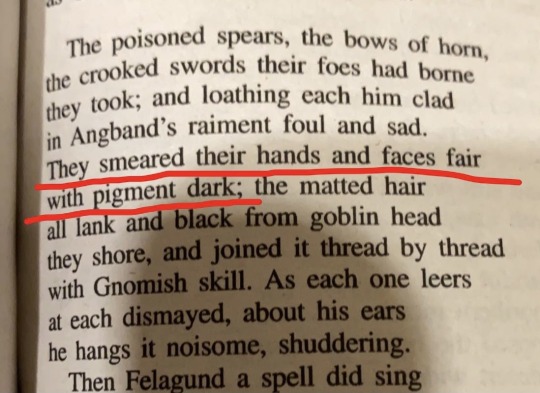
“They smeared their hands and faces fair with pigment black,” which shows us first of all that the color of the orcs skin is ultimately dark/black, at least of the orcs here in Angband during the first age. This also implies Blackface being done by Beren, Finrod and his men here, and while it was used as a survival tactic to pass through Angband without being killed/enthralled/tortured, it’s still pretty darn racist. Black people have also spoken about how orcs have been written (intentionally or unintentionally, we probably will never know) as anti-black caricatures, and this is one article discussing this by a Black person that I found eye-opening.
Another instance of the orcs being racist caricatures is in that in a private letter Tolkien describes them as “squat, broad, flat-nosed, sallow-skinned, with wide mouths and slant eyes: in fact degraded and repulsive versions of the (to Europeans) least lovely Mongol-types." Obviously, this is clearly racism towards Asian people, and journalists have even written about how orcs look like the worst depictions of the Japanese drawn by American and British illustrators during WW2. The same article above also speaks about the Haradrim and Easterlings in the LOTR movies clearly having inspiration from Eastern and non-Western cultures.
Next, another probably more well-known racist issue in The Silmarillion fandom is Maeglin, (Meglin here in HoME’s The Shaping of Middle Earth) who is described as ‘swart,’ aka meaning dark-skinned, and so was his father, Eöl:
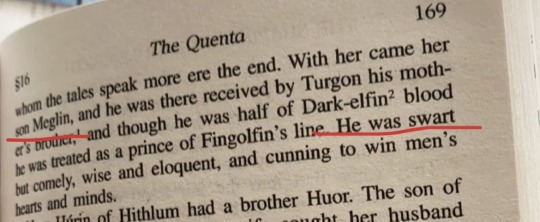
Obviously this is racist because Maeglin is CLEARLY a villain of color in this scenario, (he is the cause of the fall of Gondolin plus he basically tries to rape his cousin Idril and kill her child) in a world where other “good” characters are either described as white or whose race is simply not stated. If there were more EXPLICITLY elves of color in the Silm this wouldn’t be as much of a problem, but Maeglin here is one of the few elves (besides his father, who was clearly also a villain) whose skin color we know about, and what color is that? Swart, aka brown. What’s even worse is the fact that Eöl pretty much coerced Aredhel (who we can assume to be white since she’s known as the “White lady of the Noldor” and her skin was described as pale) into marrying him and having his child, which just perpetuates the racist stereotype of men of color being dangerous to white women. Tolkien, sweetie, this definitely reeks of racism.
Next are the men of the East of Beleriand, of who we get a pretty clear description of in The Annals of Beleriand from HoME The Shaping of Middle-Earth:
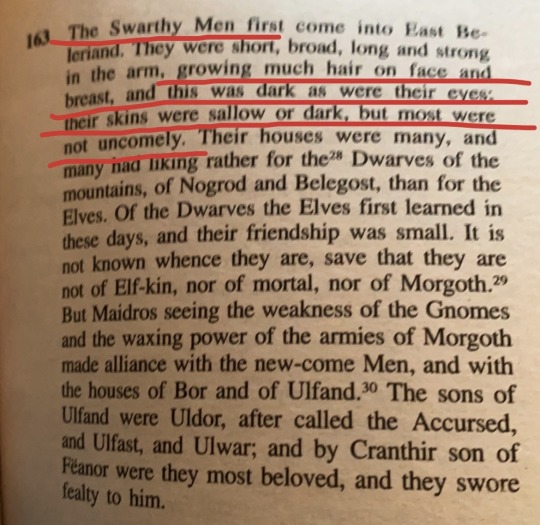
Here these men aredescribed as having lots of body and facial hair (which is a trait that can be seen in people of color) and their skins are “sallow or dark.” This is probably the least incriminating piece of evidence on this post because as you can tell, not all the men of the East were evil. Bor and his sons specifically were not, and they were loyal to the Sons of Fëanor. However, Ulfang (Ulfand in HoME) betrays the Fëanorians and ultimately is responsible for the tragedy of the Nirnaeth. And even worse, Bor and his sons are even slain by him (although Ulfang did pay his treachery with his life) here in this version. And as a whole, the Easterlings are described as more being on Morgoth’s side than on the elves, and like I said earlier, they draw a lot of non-western inspiration that can identify them as people of color, especially from the cinematic trilogy. Although these men are ultimately supposed to earn redemption during the Dagor Dagorath (aka the end of time when Melkor comes back from the void and the last battle is fought) this doesn’t erase the fact that Tolkien chose to villanize an entire group of Eastern people who we can assume to be people of color. The fact that they are called men from the ‘East’ while Aman/Valinor/the Gray Havens are considered the ‘West’ just shows you how eurocentric Tolkien’s works are by themselves, but that’s another topic for a different post. At the end of the day, lots (if not most of) these men were men of color that were portrayed as treacherous, unfaithful and even “accursed” in the case of Uldor, Ulfang’s son. All traits which demonize people of color in Tolkien’s legendarium.
Now here is the question that’s worth all three silmarils: was Tolkien aware of his racism as he should have been as an allegedly “anti-racist” that was born in South Africa? I’m afraid I don’t know the answer to that, and as a person with white privilege I don’t think I’d be qualified to answer this question regardless. This is why again, I’m encouraging BIPOC Tolkien fans to come forward (as long as they want to and are comfortable of course, since this is a triggering topic) and share their criticisms on Tolkien and how he portrays race in his legendarium, add on to what I found and correct me if they think I added something wrong. The thing is, even if Tolkien was intentionally racist, the man died in 1973, and sadly Christopher passed away last January. So it’s up to us as the Tolkien fandom to not only recognize but also address and challenge these racist concepts in his work, and make sure we are creating an environment that’s safe for fans of color and marginalized ethnic groups like myself. One of the things I love about our fandom is the diversity in fanart, since I’ve seen lots of elves drawn as POC and I really want to keep seeing this, but we also have to take into consideration how racism plays into LOTR and all of Tolkien’s works so we can be mindful consumers of it.
#Adrián’s HoME posts#adrián’s posts#racism#tw racism#jrr tolkien#the silmarillion#the silm#the silm fandom#HoME#the history of middle earth#history of middle earth#the lays of beleriand#the shaping of middle-earth#middle-earth#lotr#the lord of the rings#lord of the rings#tolkien fandom#Tolkien legendarium#orcs#Tolkien orcs#the lay of leithian#lay of leithian#finrod felagund#Finrod#luthien tinuviel#beren and luthien#beren erchamion#Beren#luthien
248 notes
·
View notes
Text

Capybara, the world’s largest rodent, grazing in Argentina's gated community of Nordelta. Silvina Frydlewsky For The Wall Street Journal
— By Silvina Frydlewsky and Kejal Vyas | October 10, 2021
TIGRE, Argentina — The lavish villas of Nordelta have for years hosted bucolic getaways for Argentina’s wealthy, protected in an enclave where industry titans and soccer stars seek escape from the torments of city life.
Yet even an exclusive gated community can’t keep out the world’s biggest rodent.
The capybaras living in Nordelta can reach 140 pounds. Picture a guinea pig the size of a St. Bernard with chompers like a beaver, an insatiable herbivore appetite and XXL-size droppings. They roam about in record numbers, munching on manicured lawns and scuffling with family pets. In August, a security camera caught a food-delivery worker getting knocked off his motorcycle after colliding with a capybara in a dark intersection.
The furry, water-loving creatures were there first—Nordelta was built on their wetland habitat—prompting awkward efforts at detente with the colossal rodents. Neighbors are split, viewing them as either vermin or victim.
“I’m not anti-capybara; I want to scratch their cute little bellies as much as anyone else,” said Gustavo Iglesias, a 62-year-old real-estate broker and longtime resident. “The problem is that their population is out of control, and people are too scared to do anything. No one wants to look like they’re opposed to nature.”
Mr. Iglesias’s lakeside garden gets a daily serving of jumbo scat dumped by the two dozen or so capybaras that lounge in his yard, he said. That was bad, but the last straw was when his dog Lucho limped home with a bloody pair of deep gashes that looked like the handiwork of rodent incisors.

Dog walkers pass grazing capybaras in the Nordelta community in Argentina. Photo: Silvina Frydlewsky For The Wall Street Journal
Capybaras don’t look threatening. Their appearance—broad snout, round body—and generally laid-back temperament make them a favorite of visitors to national parks. A capybara family is featured in “Encanto,” an animated Walt Disney Co. movie that takes place in Colombia and debuts next month. They also star as a grilled delicacy in rural parts of South America.
The big rodents, which typically live in family units of as many as 40 animals, go by different names in various countries: chigüire in Venezuela, ronsoco in Peru, poncho in Panama and carpincho in Argentina. Females can give birth to half a dozen offspring a year.
The capybaras seem to enjoy the good life in Nordelta. They sunbathe and graze at man-made lagoons, protected from such natural predators as jaguars and caimans, the South American alligator.
Residents who find the capybaras a nuisance aren’t sure what they can do. Hunting the rodents requires approval from environmental regulators.
Dueling WhatsApp chat groups have formed in recent months—one pro-capybara, one against.

Capybaras, the world biggest rodent, have grown to record numbers in Argentina's exclusive gated community of Nordelta. Photo: Silvina Frydlewsky For The Wall Street Journal
In July, Anamá Ferreira, a Brazilian model living in Nordelta, posted a photo on Twitter of a bloodied capybara she said was hit with buckshot by a neighbor. Another resident posted photos of a capybara run over by a van.
Nordelta’s man-versus-nature saga is drawing national attention. Environmentalists tied to Argentina’s leftist government want the capybaras left undisturbed by the community’s affluent members.
“I was outraged by the Nordelta residents complaining,” said Adrián Mazza, a 47-year-old tour guide at a national park. “It’s the humans that invaded the capybara’s territory.”
Others said the rodents should be relocated, citing traffic accidents and the damage from capybaras chewing up lawns and palm trees. “We can’t have a wild animal living here, running around main streets,” said a 47-year-old teacher named Romina, who declined to give her last name.
Biologist and conservationist Talía Zamboni said she has seen few issues as polarizing: “These things always get divided between right and left, the rich and the poor, and here we have these little animals caught in between.”
Some environmentalists have cited the capybaras in Nordelta in urging lawmakers to advance long-delayed legislation barring development in Argentina’s wetlands.

Capybaras had long inhabited wetlands where the gated community of Nordelta was built. Photo: Silvina Frydlewsky For The Wall Street Journal
Nordelta was built on the outskirts of the Paraná River Delta, north of Buenos Aires, after breaking ground in 1999. It was marketed as a safe, American-style haven for moneyed Argentines, including full-time residents. A slogan on Nordelta’s website promises “the tranquility of nature and the comfort of the city.”
The whopper rodents are testing how much nature residents really want. Mr. Iglesias said that after his dog was attacked two years ago, he spoke out about controlling the capybara population. His 36-year-old daughter, who also lives in Nordelta, opposed him.
“She thought I wanted to kill the capybaras!” he said. “On the contrary. I love living with them, as long as there’s a balance.”
Nordelta developer Eduardo Costantini recently sought to reassure Argentines in radio interviews that there were no plans to kill the animals. He also urged residents to find a way to live in harmony with the big rodents.
“The capybaras are defenseless and lovely beings that need care and love from us all,” Mr. Costantini wrote in a recent Instagram post. He declined to comment.

Marcelo Canton, who runs Nordelta's residents' association, explains how neighbors on lakeside properties have had to coexist with increasing numbers of capybaras. Photo: Silvina Frydlewsky For The Wall Street Journal
The capybaras live mostly around premium waterfront properties, which make up about 15% of the 3,000 properties in Nordelta, according to residents. On a recent day, cyclists and runners swerved around capybaras blocking a park path while the animals chowed on grass.
Retired journalist Marcelo Canton, spokesman for a local neighbors association, said his group has proposed various plans to government regulators. One is to create a 500-acre reserve for capybaras in Nordelta. Another idea: Castrate males.
Getting heard by state wildlife officials has been impossible during the pandemic, Mr. Canton said. Meantime, the association put up road signs urging motorists and cyclists to watch for capybaras.
“It was very painful to see people accuse us of mistreating the capybaras, because we have a great amount of respect for them here,” Mr. Canton said, joined by a few of them as he spoke. “We invest a lot of money into making sure they’re safe.”
Appeared in the October 11, 2021, print edition as 'Rodents the Size of St. Bernards Swarm an Exclusive Community.'
2 notes
·
View notes
Text
FEBUWHUMP DAY FOUR impaling.
yes this is absolutely three weeks late but life got in the way and then the urge to write just disappeared so you know how it is. the muse was there but every time i stare at the screen i just bum out - so i will continue to write with these prompts for as long as i can ha - who knows i may still be posting until NEXT feb. anyway to the zero that read these enjoy.
tw: blood, knife, character death
this is also dedicated to @rhysatlas happy birthday bb xx

-x-
It was strange, there was a point in her life that Kathryn just knew the she was going to die at a young age. This time in a physical sense, emotionally she had died a long time ago, the night that her brother was taken when they were only just seven years old. Right out from his bed and he was never seen from again - the authorities had labeled Peter Bishop as deceased and Kathryn chose to believe it, the bond that had been strong between the pair of them had been severed and she couldn’t feel him anymore. That was the night she knew she had emotionally shut herself off from everybody, she had died then and there.
So of course it would come to no surprise to anyone when she got caught up in things that she shouldn’t have. Parallel worlds and doppelgängers wasn’t really where Kathryn thought she would end up, but she had wanted to please her father, please the man who seemed to have emotionally abandoned her when she was younger. Without Peter there seemed to be no Walter Bishop and now as the Secretary of Defense, Kathryn knew that this was would be the only thing to make him proud. So infiltrating the other universe with Agent Olivia Dunham, Kathryn made sure that she was convincing and brilliant - trying her best to over come the fact that Peter ... her brother was alive and well.
But there had been no bond - no sudden re connection and that made Kathryn’s mission a whole lot easier. But then there was him. Adrián Matias. A man, who on her side was wanted by her father for crimes unthinkable, someone who the Fringe Division had a kill on sight order. While on this side he seemed to be the complete opposite. He was a PUPPY, a doting partner that would corner Kathryn in the hallway - or drag her into a closet because they weren’t to be found out. And of course, Kathryn let herself fall into character and it felt SO good to feel something again. Of course it all had to come undone when Olivia was caught - when Peter realised that it wasn’t her, when he realised that his sister wasn’t his REAL sister and they were forced to go back home.
Kathryn tried not to think about HIM but it seemed to be impossible. Catching up on what her doppelganger had been getting up too, she noticed that the man that she had fallen in love with on the other side had the same idea about her. But of course it would end in tragedy. He had only been using her - he had come to know about the other universe, had come to realise that the woman who he was with now wasn’t the one he WANTED. But he kept playing, manipulating her into telling him how it was possible to get to the other side and well - of course once he had the information he had no need for THIS version anymore.
She would have thought that he would use a gun? Something that he was more known for, but the knife in her gut was something she hadn’t been expecting - a gun she would have had more time to react, had the opportunity to move it away from her, probably turn it back on him, maybe that’s why he had slowly pushed into her as he pressed a kiss against her lips - it was rough and demanding and his hand wrapped around her neck, pushing her back against the mattress - IMPALING her and the soft gasp that escaped her lips when he pulled away, hand lingering around her throat.
“Fuck...” Came the breathless reply and the man above her could only smirk. His hand coming up to grip onto her chin - fingers digging into her skin and she knew that it would leave a bruise (especially with how much blood was now spilled on the white sheets of the bed), making sure that she watched him and didn’t look down. His other hand let go of the knife and a cry escaped Kathryn’s lips as the weapon was jostled, her own hands moved down to grip onto it but Adrián had wrapped her wrists into a bruising grip, shoving them above her head and slamming them into the headboard as another cry escaped her lips. “...you.”
She knew that she could have thrown him across the room with her powers, but her mind was so incredibly sluggish that she didn’t even think she could lift her head. The pounding was starting to become unbearable and the the pain in her abdomen was getting worse, the shock was starting to wear off and she knew that if she didn’t do something soon she would die. His lips moved but she couldn’t make out what he said, probably something incredibly assholey.
“Nothing personal,” He had the audacity to say in English and Kat couldn’t take it anymore and with the last bit of her strength, the red energy that had become a symbol of her power glowed around her hands and Matias was thrown off her body - slamming right into the wall opposite the bed - his body falling to the ground and Kathryn couldn’t help the satisfied snort that escaped her body as her eyes started to grow heavy, her body was shaky and tears had started to roll down her cheeks, well she guessed this was it now. Killed by the doppelganger of the man that she fell in love with, how ironic was that ?
#febuwhump#febuwhump 2021#day four#impaling#fringe#original character#kathryn bishop#* & SPYRO WRITES.#alt!kathryn.#happy birthday bb.#it's not the best but !!!!
2 notes
·
View notes
Photo

I’ve become very good at playing pretend recently. I always thought that I was good at it, but I realize now I was merely pretending to, uh, pretend. I wasn’t fully embracing a reality of my own creation.
Sure, that paragraph reads like a new age manifesto, or like someone whose quarantine has pushed him a little too far. And sure, there’s probably something to that, too.
But no, I’ve become very good at tricking my brain into thinking it’s 2017, or 2011 or 1982.
I was never someone that would go and watch classic games, or even past favorites of mine. In the offseason, I might pull up a random game from the past simply because I like the sounds or maybe I’d see something funny that everyone had forgotten about, but really, I didn’t see the point. Sports were of the moment, they are these communal things that bring us together and the action rises and falls across a single game and across a season. How could one simply just go back?
Turns out, during a global pandemic, you can.
Over the last few years, I’ve become a huge Boston Bruins fan and I was looking forward to them mounting a Stanley Cup run this spring. Since that’s not happening, I’m now watching every game from the 2011 playoffs (which I did not watch as it happened). Sure, I know the final, final outcome, but every night I’ll put on my Bruins jersey and sit down and watch as if it’s happening all at once. Sometimes, for just a few minutes maybe, my mind will forget this was in the past and life feels good again.
It’s the same for the daily MLB.com game. Friday featured Rich Hill’s no-hitter that was spoiled by Josh Harrison’s 10th-inning home run. I had even watched this one live as it was happening, but at some point in the middle innings, I found myself so frustrated that the team wasn’t hitting I had to catch myself and realize: This is all pre-ordained.
I even found myself incredibly invested in a dice baseball game I played with a friend online. (It’s super simple and super fun: You can thank Pirates beat writer Stephen Nesbitt and his father for this one. You’ll need an Athletic account, but it’s worth it.)
Playing as the Reds, this pen-and-paper version of Nick Senzel became a lifelong favorite when I (he?) cracked a two-run home run while I was predicting that he (me?) would simply ground out.
And when Joey Votto hit a three-run homer to take the lead, I whooped and hollered more than I had in weeks. My wife had to come in from the other room to remind me that we had neighbors.
But for a few minutes, playing make believe made up for ... all of this (gestures wildly.)
Anyway, here are a few things I wrote this week about baseball that will hopefully give you something fun to read for a few minutes:
Ken Griffey Jr. was nearly traded to the Mets in 2000. I traced all the insane things that would have happened if the trade went through. (Griffey himself may actually have the smallest impact.)
If you’ve been here for a while, you may know that I love Toad Ramsey. Well, I wrote about the man who invented the knuckleball and the pint of whiskey in a pitcher of beer.
Who will be the best players in baseball in a decade? It’s almost impossible to know. So, I asked a baby and a guy named Ken Rosenthal to answer the question. The art Jenny Goldstick made for the post also makes me laugh a lot.

Oh and here’s one weird fact for every big league team.
Here are also a few things I didn’t write, but that I demand you read:
Grant Brisbee has the investigation you need to see: Barry Zito is on the Masked Singer.
Andrew Simon remembers the great friendship between Adrián Beltré and Félix Hernández. It’s the kind of feel-good article we could all use right now.
Friend and amazing writer Eric Nusbaum has a new book out called “Stealing Home,” that you should all go purchase. It’s about the building of Dodger Stadium and the people who were displaced because of it. He was set to go on a nice little tour for the book when all this went down, so maybe go buy a copy for yourself to read in quarantine?
Stay safe and healthy.
(art by Tom Forget)
7 notes
·
View notes
Text
Hogwarts Needs Archaeologists, Part 1: Fantastic Antiquities and Where to Find Them

By Adrián Maldonado
The Harry Potterverse is crawling with ancient artefacts and old magic. That doesn’t make it a story about archaeology as such – there is very little effort from the protagonists to do more than treasure-hunt (and in at least one case, tomb-raid) to collect and then destroy these artefacts. In one sense, the Harry Potter cycle is a parable of Fantastic Antiquities and How to Break Them.

Tom Riddle, Tomb Raider (source)
Which is why I haven’t felt the need to do an ‘archaeology of Harry Potter’ post on this blog. But then I went back to the books again. Well, sort of. I am lucky enough to share a timeline with the Binge Mode podcast by the superheroic duo Mallory Rubin and Jason Concepcion. Their breakdown of the books and films, chapter by chapter and scene by scene, with added detail culled from the wider (so wide) Potter canon, has reawakened my appreciation for the depth of JK’s creation. And, this should surprise absolutely no one by now, it makes me think there’s lessons for archaeologists in the Potterverse.
This will take more than one blog post to tease out. To begin with, we can start by looking at the vast array of antiquities which feature in the books’ own timeline. From there, we can explore how archaeology might work in the wizarding world, and then bring it back to reflections on Rowling’s uses of the past more generally. Speaking of the past, if you don’t want books from 20 years ago spoiled, well, tough look, my guy.
Medieval archaeology
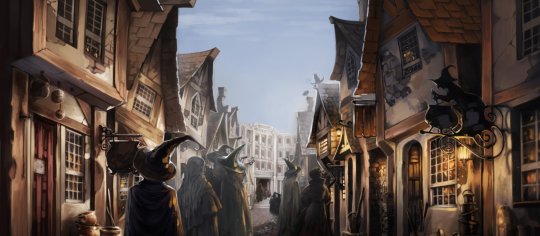
Getting medieval in Diagon Alley (source)
To begin in the most obvious place, there is a lot in the wizarding world which owes its origins to the Middle Ages. According to Rowling’s Pottermore website, Diagon Alley and its major landmarks such as the Leaky Cauldron and Gringotts go back to c. 1500, retaining a ramshackle medieval aesthetic. The prison of Azkaban originated as the fortress of the fifteenth-century sorcerer Ezkidris. Even things which don’t appear obviously medieval are revealed to be medieval on Pottermore: the Quidditch World Cup has been played since 1473, and Floo powder, the magical form of transport, was invented in the thirteenth century by Ignatia Wildsmith (which, if I have another daughter, I will definitely adopt as a name).
The structural medievalism of the Potterverse includes Hogwarts School of Witchcraft and Wizardry itself, a ponderous castle-university suffused with old magic. Oddly for Britain’s premier (only?) centre of magical learning, we do not seem to know exactly how old it is, but its founders all seem to have lived in the tenth century according to Pottermore. This would make it earlier than the first Muggle universities, themselves a product of the twelfth century and later. It is interesting to think that the robe-wearing denizens of Oxbridge and St Andrews are merely replicating earlier Hogwarts traditions.
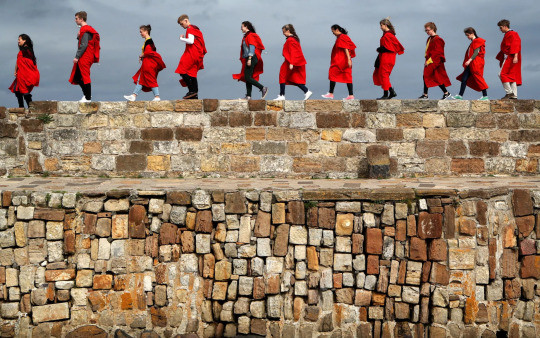
Echoes of Hogwarts (source)
What is less immediately obvious is that Hogwarts’ medieval origins are communicated largely through material culture. The Sorting Hat belonged to founder Godric Gryffindor, and so is at least a thousand years old. The Mirror of Erised is also said to be ancient, though we are vague on dates. Does age confer magical properties, or have these objects survived due to the power of their magic? It can’t be the latter, as we are continually reminded of the precarious state of antiquities in the Potterverse. The Hogwarts houses retain stories about early medieval artefacts associated with the lives of their founders, including Rowena Ravenclaw’s lost diadem, Helga Hufflepuff’s cup, and Gryffindor’s Sword; Slytherin House has no equivalent relic-mascot although it does boast its own Chamber of Secrets (not a euphemism). Each of these objects is lost, stolen, or defiled in the course of these stories.
Ravenclaw’s diadem was lost almost as soon as it was made, and Slytherin’s Locket was never kept in Hogwarts, showing the somewhat less than reverential treatment of these artefacts, even among those who should best appreciate their value. More on Slytherin’s personal effects later, but it may be worth noting here that his Chamber was until lately populated with a living balrog, I mean Basilisk, which was at least as ancient as Slytherin before its murder by a student dangerously swinging another medieval artefact in 1998. Guys. Lock down your antiquities.

Days without an accident on site: 0 (source)
Of these artefacts, only the Sword of Gryffindor was curated to any extent, even if only as a wall-hanging which, let me repeat, students were allowed to handle. Hufflepuff’s cup was kept in the common room of its founder’s house, allowing it to be stolen and inhabited with cursed fragments of soul which almost led to the demise of the rules-based wizarding world order. In the end, Helga’s cup was found in a damn bank vault instead of a climate-controlled museum store. Listen, a secure, alarmed case may not have stopped Voldemort, but we could have at least saved these precious witnesses of wizarding origins from being callously destroyed in the war. Who will be the wizarding Mortimer Wheeler next time?
Excavating Hogwarts
Reading through Pottermore, it transpires that paying no heed to the medieval material world our protagonists live in is actively causing them harm. Two of Voldemort’s horcruxes, Slytherin’s Locket and Marvolo Gaunt’s Ring, date back to the early medieval period, but were kept as personal possessions passed down the Gaunt family line, allowing them to be easily stolen or sold, and, again, be haunted by evil curses. Guys. Where do I send my CV to develop a course in Material Culture Studies at Hogwarts? Better yet, let’s make it a MOOC, train members of the public, and then maybe next time someone tries to pawn an ancient relic our world isn’t threatened by cursed archaeology.
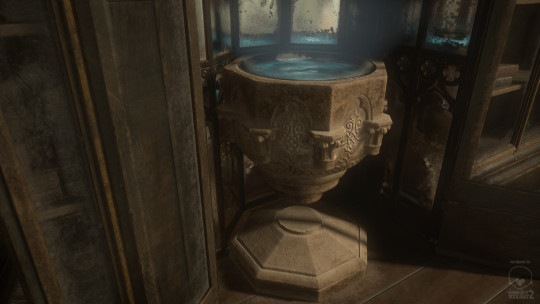
Please don’t drink from the archaeology (source)
My favourite revelation is that the Hogwarts pensieve, the expositional device in Dumbledore’s office which allows Harry to experience flashback sequences along with the reader, is a noted antiquity itself. It is said to be a stone basin inscribed with Saxon runes, and to have been found buried on the spot where Hogwarts would be built.
I can’t just pass this by. Why would a pensieve be buried? We know that wizards are buried with their wands, as recounted to plot-driving effect in Dumbledore’s case. It also transpires that, like wands, pensieves are very personal items, and are customarily buried with their owners along with any memories they have stored. What an incredible boon this would be for a wizarding archaeologist! And how well would this explain all the now-empty vessels we have found used as grave goods since prehistory, usually explained by us dull-minded archaeologists as ‘food-offerings’. Along with the spell priori incantatem, which allows one to see the last few spells a wand was used for, an archaeowitch encountering a burial furnished with wand and pensieve would have an unparalleled insight into the lives and deaths of the wizarding dead.
Back to the Hogwarts pensieve, then, we have a massive stone basin inscribed in Saxon runes, which would be rather out of place in the early medieval Scottish highlands, where Hogwarts is based. Is this a disturbed wizard’s tomb or a ritualised offering in a wetland setting? Once upon a time, this find would be taken as evidence for Anglo-Saxon invasion, but now we recognize that objects could be transported for a variety of reasons, and indeed are themselves more likely to be used in votive deposits due to the value they have accrued in the journey. It would certainly merit further investigation whether the Hogwarts loch was chosen by its founders not for its now-isolated and depopulated landscape, itself a product of fairly recent historical processes, but because it had an existing heritage as a site of ritual deposition. We can only hope, for the sake of its students, that the founders undertook some due-diligence magical remote sensing to detect any complicating factors from buried magic, dark or light, before undertaking a major construction project. But beyond health and safety concerns, I feel that we have lost something else by not recording what has presumably been a cult place.
A medieval inheritance
Pottermore also traces the origins of several major wizarding families to the Middle Ages, most notably the Malfoys. Their lineage can be traced back to Armand Malfoy, who helped William the Bastard become Conqueror of England in the real-world timeline: “Having rendered unknown, shady (and almost certainly magical) services to King William I, Malfoy was given a prime piece of land in Wiltshire, seized from local landowners, upon which his descendants have lived for ten consecutive centuries.” In gratitude for their help with the Norman Conquest, he was granted a manor, which has passed down the family for 1000 years to Draco Malfoy. The mansion itself is said to be filled with ancient magical and muggle artefacts and priceless artwork, as so many stately homes were by the nineteenth century. Many of Britain’s museums were founded through bequests of such private collections, and these would make an interesting, if dangerous, Dark Magic wing of a Wizarding Museum. Given the spectacular fall from grace of the Malfoy family in the second wizarding war, I do worry about the status of the Malfoy collection, and whether it is at risk of being hived off in auction. The Draco Malfoy essay does reveal that he still lives in the manor with its artefacts after the war, so we still live in hope that this heritage resource has not been lost.

Even dark artefacts need curators (source)
In light of their family history, it would be easy to laugh off the Malfoys’ malevolence as the entitlement that comes from old money, but it should be noted that Harry Potter is a noted trust-fund baby himself. For all his remarkable magical prowess, Harry Potter’s destiny is also down to some serious inherited privilege. His medieval progenitor Linfred of Stinchcombe, who also lived in the Norman era, built up the family’s wealth through his famous inventions, including potions like Skele-gro. Their marriage into a wealthy family in Godric’s Hollow is also auspicious – as home to the Peverils and the Dumbledores, whose stories are so indelibly entwined in the history of wizarding Britain, this little village in England’s west country seems to have been the epicentre of magical achievement for a millennium. Something in the water, perhaps? Or a self-segregating community of elite families? It is through these connections that the Potter family came into possession of one of the Deathly Hallows, the invisibility cloak, in another form of inheritance which increasingly looks like the secret of Harry’s success.
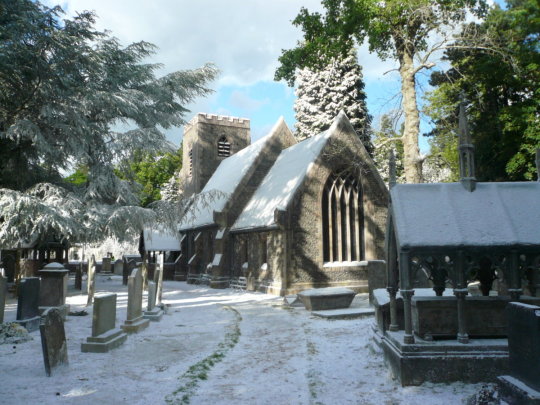
Godric’s Hollow - in dire need of graveyard survey (source)
The Hallows themselves are the key to Dumbledore and Harry’s success, and Voldemort’s undoing, Unbeknownst to many, the Resurrection Stone, invisibility cloak and Elder Wand all seem to be inventions of the Peveril brothers in the thirteenth century. We know this partly because Harry and Hermione stumble on Ignotus Peveril’s medieval gravestone in the churchyard of Godric’s Hollow, clearly marked with the sign of the Deathly Hallows, at which point things begin to come together. Basically, Voldemort is able to be defeated because he only trafficked in antiquities, without researching their archaeological context – but in fairness, neither did Dumbledore and Harry until very late in the game. A simple bit of churchyard recording may have brought this to the attention of local history buffs much sooner, and we may all have been safer for it. Basically, folks, local heritage is all of our heritage, and is not just for tourists obsessively chasing only their own family history.
Potter’s pedigree
And so we come to genealogy, which is the secret engine of this cycle of stories, just as it seems to be in so many of our favourite fantasy worlds. The objects, people and places profiled here all seem to be the remnants of stories which seem to begin no earlier than the tenth century or so. But it is clear that the wizarding world existed before then, and the limits of our vision can be explained by the fact that the first university was established at that time, and presumably the recording of historical events as well. In short, the narrow focus on a small pool of influential families and their feuds are the unresolved business of the formation of medieval kingdoms of England, Wales, Scotland and Ireland, as indeed is so much of our own contemporary politics. What if our consciousness extended to the messier early medieval kingdoms, or (whisper it) prehistory? Just how problematic would a wizarding archaeology be? And could it free us from the Great Men and Their Battles vision of the human journey? Let’s pick up our trowel-wands and find out.
***
Forward to Part 2: Excavating Magic
Follow us on @AlmostArch
38 notes
·
View notes
Text
Post-Match Day Thread: Liverpool 3 - 1 Arsenal via /r/LiverpoolFC
Post-Match Day Thread: Liverpool 3 - 1 Arsenal
Another season, another easy win over Arsenal. They're really not very good are they?
Liverpool 3 - 1 Arsenal
Teams
Liverpool Arsenal Player Position Goals Assists Rating Rating Assists Goals Position Player Adrián GK 6.0 6.2 GK Leno Alexander-Arnold RB 1 7.6 6.4 RB Maitnland-Niles Matip CB 1 8.3 6.8 CB Sokratis van Dijk CB 6.2 5.8 CB Luiz Robertson LB 7.3 5.8 LB Monreal Henderson CM 6.9 6.9 CM Guendouzi Fabinho DM 1 7.4 6.4 CM Xhaka Wijnaldum CM 7.0 5.6 CM Willock Salah LW 2 8.6 5.7 AM Ceballos Firmino FW 7.0 7.4 FW Pépé Mané RW 7.7 6.2 FW Aubameyang Milner SUB 6.2 7.6 1 SUB Torreira Oxlade-Chamberlain SUB 5.9 6.1 SUB Lacazette Lallana SUB 5.9 6.2 SUB Mkhitaryan Shaqiri SUB SUB Martínez Origi SUB SUB Kolasinac Kelleher SUB SUB Nelson Gomez SUB SUB Chambers
Klopp chose to revert to (what I consider to be) our strongest midfield three, with Henderson and Wijnaldum flanking Fabinho. The front three remains the same.
Arsenal do something really fucking weird and I'll come on to that later.
Match Events
Liverpool Min Arsenal Matip (1-0) 41 Luiz YELLOW 48 Salah (2-0) 49 Salah (3-0) 59 61 Torreira ON Ceballos OFF Milner ON Wijnaldum OFF 59 Oxlade-Chamberlain ON Mané OFF 77 81 Lacazette ON Willock OFF 85 Torreira (3-1) Lallana ON Firmino OFF 86 Mkhitaryan ON Guendouzi OFF Fabinho YELLOW 90+2
Goals
Obviously I can't post links to the highlights anymore, which is a shame. I'm sure you can all find them.
Matip 1-0 https://i.imgur.com/ZG8p858.png This was a fairly simple set piece. Van Dijk is going to fake a run to the near post, dragging one of the Sideshow Bob's with him, then bend his run to the back post. That takes the defenders out of position and allows Matip to make a straight run to the six yard box. https://i.imgur.com/9BuyhY2.png Because of that battle whoever it is that's supposed to be picking up Matip actually can't really do anything to affect him. Matip gets the run and the jump and powers home.
Salah (pen) 2-0 https://i.imgur.com/MsNwCcT.png As was often the case, Mané is able to spray a ball wide to Alexander-Arnold who has the absolute freedom Liverpool on that right hand side. https://i.imgur.com/BNjzTrs.png Trent can fire a ball into Firmino's feet, Arsenal's defence are absolutely nowhere, and Salah has got the run on Luiz. https://i.imgur.com/a1HgvdV.png "Soft."
Salah 3-0 https://i.imgur.com/gqcjkcX.png It's worth mentioning that this goal comes from Adrían delivering a nice chipped pass into Trent. Here you can see the issues with Arsenal though. Nobody is near Fabinho, which means when Trent turns and plays a pass back to Fabinho he has hours to work out the next move. Xhaka should be much, much closer (if they do want to be pressing). https://i.imgur.com/iFK8mKJ.png The thing is Xhaka does get close, but he's not really trying to close Fabinho down. Fabinho plays a lovely blind pass for 40 yards through three Arsenal players. https://i.imgur.com/XfkRPoM.png Salah is able to turn the cautioned Luiz with ridiculous ease and get a run on goal. Whoever, the other issue is that Arsenal are 1 on 1 with Mané and Firmino. Neither defender can risk coming across to cover because they'll leave the second and third most dangerous attackers in the league alone. https://i.imgur.com/It7EVk4.png Leno is nowhere really and Salah can place the ball in the far corner at his leisure.
Torreira 1-3 https://i.imgur.com/XkqVH1x.jpg It's fair to say that we weren't really giving 100% at this point. Fabinho is more than happy to show Aubameyang inside without really doing much to tackle him. https://i.imgur.com/XRce7nD.png Ox gives a half hearted charge but again, absolutely fine with Xhaka going side to side again. https://i.imgur.com/OlvodFb.png The pass from Sideshow Mel gets deflected out to the byline by Matip's leg. https://i.imgur.com/9SrFzQc.png However, when Trent makes a (poor) clearance Milner has gone to the touchline to offer an out ball. That leaves Aubameyang in space inside our box. https://i.imgur.com/gQq3xju.png As Aubameyang cuts inside Ox is tracking back with Lacazette. If I'm being critical I'd want Fabinho or Henderson to get tighter to Torreira. https://i.imgur.com/2RqRlJq.png That being said, Henderson does nearly get a nick on this ball and clear it to Fabinho, which would've no doubt set up another attack seeing as Salah is nowhere near this picture. As it turns out, both players miss the ball the first time, and it takes a lucky bounce which allows Torreira to strike home.
Talking Points
Arsenal's Approach and a Blueprint to Beat Us?
I am of the opinion that there are two approaches that could beat Liverpool as we currently are.
The first is the approach that Chelsea took in the Super Cup, and how Manchester City usually play against us. They are happy for us to have possession, to an extent, but employ a midfield destroyer in the likes of Fernandino or Kante to break up our intricate passing in midfield and launch counter attacks. The problem with this approach is twofold: firstly, there's only so many players of that type, and second, if you're not good enough at it we will punish you.
The second approach is more in line with the likes of Burnley (we'll check on this next week) or arguably Southampton, where they're happy to soak up the pressure but launch long balls over the top to get van Dijk and Matip turning. This is much harder, as you have to beat the offside trap that we are very good at to hurt us. The other issue is that if you're soaking up the pressure we will get corners and free kicks and as we've seen we are also very good at those.
I think Arsenal tried to mix the two. This was largely down to their formation. The 4-3-1-2 approach packed the midfield and tried to shut us down from passing through them. Then, when they recovered the ball, they could launch it long for Pépé and Aubameyang to attack us. It's worth remembering that this did almost work. If Pépé in particular wasn't utterly shit (Jurgen Knew) then they could have gone in at the break 2 or 3 up.
However, the downside is that it left the wings completely wide open. We didn't need to go through the middle because we had Trent and Robertson open at all times to get crosses in. As soon as Arsenal's midfield had to shift across to cover the gaps opened up and we found plenty of joy all over the park. I think this was a case of a team just simply not being as good as us.
Mohammad Salah
Not bad for a one season wonder is he? I thought he was outstanding yesterday, always looking dangerous and really enjoying his freedom to attack a weak back line.
100% Start
Yes it is obviously early days - I'm not even looking at the table currently - but I think it is important to show to the rest of the league that we are still good. There was lots of doom and gloom over the summer about how we are standing still - if we can keep this run going into the international break I think will shut a lot of them up. We then have 4 relatively easy games before United - that's the marker I want to set down.
Liverpool's next fixture is against Burnley in the Premier League. The match kicks off at 17:30 BST/12:30 ET on the 31st of August.
Submitted August 25, 2019 at 06:17PM by voliton
via reddit https://ift.tt/30wUwkh
2 notes
·
View notes
Text
Momento cumbre en Revista Beatles!. En una edición especial del Abecedario del rock argentino de los '70 presentamos la primera parte de "Artaud", de Luis Alberto Spinetta. El mejor disco del rock nacional.
En Pop para divertirse, una historia que no tiene nada de divertida: La de Dean Reed, el Elvis comunista. Seguimos con la etapa Pepper en los Bonus de Anthology 2 de Los Beatles. Mas Toddy en la merienda porque llega la última entrega de la música de las series de los '50 y '60. Luego de sus canciones políticas, los éxitos románticos de Gian Franco Pagliaro y para el final: Los Cazafantasmas (¿o caza de brujas?).
Revista Beatles, - Artaud para millones. Por FM Galena 94.5. www.radiogalena.com.ar
Emitido el sábado 9 de diciembre de 2023. 16.00 horas.
Idea y conducción: José Luis Banchio.
Sonido, Post Edición y Toque Mono: Adrián Zimmermann
FM Galena 94.5. Rafaela, Santa Fe. República Argentina.
Listado de canciones:
1 – Todas las hojas son del viento - Luis Alberto Spinetta
2 – Cementerio Club - Luis Alberto Spinetta
3 – Por - Luis Alberto Spinetta
4 – Superchería - Luis Alberto Spinetta
5 – La sed verdadera - Luis Alberto Spinetta
6 – Our Summer Romance – Dean Reed
7 – I Kissed A Queen - Dean Reed
8 – El Cantor - Dean Reed
9 – Venceremos - Dean Reed
10 - She's Leaving Home (Toma 1 – Instrumental) – The Beatles
11 - She's Leaving Home (Oficial) – The Beatles
12 – El Hombre del Rifle - Intro Serie
13 – Cheyenne - Intro Serie
14 – La Ley del Revolver (Gunsmoke) - Intro Serie
15 – Los Comandos de Garrison - Intro Serie
16 – Valle de Pasiones - Intro Serie
17 – The Munsters - Intro Serie
18 – I Love Lucy - Intro Serie
19 – UFO - Intro Serie
20 – El Capitán Escarlata – The Spectrun (Intro Serie)
21 – No Te vayas entonces - Gian Franco Pagliaro
22 – Un ramito de violetas - Gian Franco Pagliaro
23 – Vendrás con el mar, las uvas y el sol - Gian Franco Pagliaro
24 - Amigos míos me enamoré - Gian Franco Pagliaro
25 – Ghostbuster – Ray Parker Jr.
Link para escuchar el programa:
https://www.ivoox.com/revista-beatles-programa-n-471-audios-mp3_rf_120970792_1.html
https://rafaeladigital.com/noticias/revista-beatles-reproduccion-del-programa-no-471/?feed_id=4271
0 notes
Text
Tríptico Building in Córdoba is divided into three vertical houses
Architects Mariela Marchisio, Cristián Nanzer and Germán Margherit have completed a concrete building in central Argentina that contains a trio of tall, skinny residences designed for both living and working.
The Tríptico Building is located within the Ducasse neighbourhood on the northern outskirts of Córdoba, Argentina. It sits near a commercial sector that was once a hub for automotive parts and is now in the midst of a transformation.
The Tríptico Building is in central Argentina
Designed by three local architects – Mariela Marchisio, Cristián Nanzer and Germán Margherit – the multi-unit building occupies a lot that is 10 metres wide and 25.7 metres deep, and bounded by party walls.
"The whole building is a typological essay on densification in a degraded neighbourhood area, but with a strategic location in relation to the services of the city centre and the linear park of the Suquía River," said the architects.
The building is a trio of narrow residences
Envisioned as a trial in "micro-density", the 514-square-metre building comprises a trio of narrow, three-storey residences that are placed next to each other, rather than being stacked.
Each dwelling's interior is 3.13 metres wide and 18 metres tall. Levels are linked by a staircase in each unit.
The levels are linked by staircases in each unit
"The typological concept of the project is based on three vertical houses, not stacked but attached to each other along their side boundaries, all with double ventilation," said the architects.
The design takes cues from Japanese precedents, such as the vertical houses in Tokyo by architect Waro Kishi. The concepts underlying those homes were translated using "South American eyes and hands".
A workspace leads to a small courtyard
The units within the Tríptico Building are designed for both living and working.
A study and workspace are found on the ground level, which also offers a small courtyard that can serve as a barbecue area or children's play zone.
A children's bedroom in the Tríptico Building
The second level holds two en-suite bedrooms that can be converted into a workspace if needed.
The third storey, which is double height, encompasses a living room, kitchen, dining area and balcony.
This level also provides access to a rooftop terrace that is shared by all three residences. The terrace offers views of the urban skyline and the distant mountains.
The building's reinforced concrete structure helped determine its spatial configuration, according to the architects.
A double-height living space occupies the third storey
"Four longitudinal concrete partitions, four levels high, define the 'bars' of the three vertical spaces of each unit," the team explained.
Moreover, on the facade, an inverted beam spanning 10 metres – between the two party walls – allowed for the central partitions to not extend to the ground. This is turn freed up space for a hallway and a three-car garage.
A three-car garage seen from the facade
"This space, when the vehicles are removed, becomes a space for sporadic social events for the inhabitants of the consortium," the team said.
The north elevation consists of a metal frame wrapped with galvanised wire mesh. The mesh is covered with deciduous vines, mainly wisteria, which grows out of concrete planters lining the facade.
Courtyards serving the three residences viewed from above
The interior features industrial finishes such as exposed concrete walls, plywood cabinetry and corrugated metal closet doors. Pipes and conduit were left exposed.
Home to approximately 1.5 million people, Córdoba is the capital of the Argentine province of the same name. Other projects there include a house by PSV Arquitectura that consists of overlapping layers of concrete and stone, and a cultural centre that features a huge, sloping public square on its roof.
The photography is by Gonzalo Viramonte.
Project credits:
Architects: Mariela Marchisio, Cristián Nanzer and Germán Margherit
Collaborator: Marcos Barboza
Structural calculations: Edgard Morán
Constructor: Adrián Molina, S. Heredia
Aluminium carpentry: Aluvicor
Elaborated concrete: Hormi – Block SA
Blacksmiths: Fabián Aimar e Hijos, Luis Herrera and Diego Herrera
The post Tríptico Building in Córdoba is divided into three vertical houses appeared first on Dezeen.
0 notes
Text
Trigger warning: implied rape
So in The Lay of Leithian there are actually a few mentions of how Morgoth wanted Lúthien in his lair and these just feel... rapist. See for yourself:

When it says “that foul should be what once was clean” that reminds me of the misogynistic argument that a woman is no longer ‘clean’ after she loses her virginity and has had sexual intercourse, even if the intercourse was rape.
This is really the first time possible rape has ever been implied in the Tolkien legendarium as far as I know (later there’s also Celebrían’s kidnapping by the orcs and how it can also be read as her having been raped by the orcs, but that’s a topic for another post). Seeing Morgoth and Sauron, the villains in this story, being depicted as an implied possible rapist and implied rape apologist ties rape with evil, a notion that today is evident but back when the lay was written (during the 1920’s) this wasn’t widespread. So it’s quite impressive that Tolkien hints at/implies at the evil of rape, and how he empowers Lúthien as a strong and brave female character in a time in which women didn’t have many of the rights they have today.
#Adrián’s HoME posts#Adrián’s posts#the history of middle earth#the lays of beleriand#history of middle earth#luthien tinuviel#beren and luthien#luthien#tinuviel#beren erchamion#Morgoth#melkor#sauron#Marion#Thú#Angband#the silm fandom#the silm#the silmarillion#Silmarillion#silmaril#the lay of leithian#Tolkien#Tolkien fandom#jrr tolkien#tolkien legendarium#christopher tolkien#lord of the rings#Beren#Beren son of Barahir
39 notes
·
View notes
Text
COVID-19 is having a devastating impact on the economic well-being of Latino families
New Post has been published on http://khalilhumam.com/covid-19-is-having-a-devastating-impact-on-the-economic-well-being-of-latino-families/
COVID-19 is having a devastating impact on the economic well-being of Latino families

By Gabriel R. Sanchez, Edward D. Vargas , Adrián A. Pedroza As we now know—and as our team has documented elsewhere—Latino Americans are more likely than non-Hispanic whites to contract COVID-19 and to face disproportionately high mortality rates when they contract the virus. What has not been well understood, outside of anecdotal accounts, is the impact COVID-19 is having on the economic well-being of Latino families. In a new Abriendo Puertas/Latino Decisions National Parent Survey that we conducted from June 12-19, 2020, we find that, beyond the health impacts of the virus, Latino families are also facing severe economic stress due to the COVID-19 recession. (The full results of the complete survey will be released in August.)[1] While some of the trends in the results of the survey mirror those for all populations in the U.S. during the pandemic, the depth of economic distress being experienced by Latino families is deeply concerning and requires explicit attention from policymakers. Below are some of the sobering data-points from the survey that illustrate just how financially devastating COVID-19 has been for Latino families across the nation:
Job losses. 29% of Latino families have had someone in their household lose their job since businesses across the country began shutting down due to COVID-19. Job losses among Latinos are highest among 18-29-year-olds and those with income levels of $25,000 or lower, with each rising to 37%.
Business losses. 33% of Latino parents/primary caregivers have either seen their business shut down and/or have experienced significant drops in revenue. Given the huge role that Latino small-business owners have played in keeping the small-business component of the economy alive and well,[2] the fact that 1 in 3 Latino families have seen their businesses negatively impacted by COVID-19 is an inauspicious sign for the economic health of the small-business sector.
Difficulties making housing payments. 41% of Latino parents/primary caregivers report having trouble paying for their rent or mortgage. The cost of housing has been more challenging for those who are renting their homes, as we see 49% of renters in the survey indicating that they are having trouble paying their rent compared to 35% for those who own their home.
Undermeployment. 52% of Latino parents/primary caregivers have had their work hours or their pay cut, but have kept their jobs.
Our survey highlights other dimensions of the economic vulnerability of Hispanic families. This is best reflected in the limited safety net that most respondents in our representative sample indicate that they have available to lean on during this difficult time. Nearly half (45%) of Hispanic families across the country have only $1,000 or less in savings for financial emergencies, and fully 20% with an astonishing $100 or less. Given these meager savings, it is not surprising that 42% of Latino families in the survey indicate that they have used up all of their family’s savings to pay for basic living expenses. The financial stress that families are under right now is reflected in families making “receiving help with wages and income” the most cited issue (32%) in an open-ended question to respondents asking them about the most important issues facing their community that the government should address. Because of these limited assets, unfortunately, Latino families have had to make tough decisions in order to manage the deteriorating financial situations of their households during the pandemic. One of the most sobering findings from the survey is that about 1 in 4 (26%) of economically vulnerable Latino families have turned to pay-day or easy loan companies that charge high interest rates. Using this option is highest among parents with children aged 0-4 at 33%. This suggests a very rough road ahead for the economic trajectories of these families—particularly for the children in these families. The rise in unemployment among Latinos has also generated a decrease in health insurance coverage among families, as 37% of respondents indicated that they or someone in their household have lost their employer-provided health insurance benefits. Among those who lost health insurance, 54% reported that their children lost their health insurance coverage as well. Unfortunately, this could mean that the significant improvements in health coverage for Latino families through the implementation of the Affordable Care Act could be wiped out by the recession caused by COVID-19. As this survey makes clear, Latino families across the nation are struggling financially because of the severe impact that COVID-19 has had on the economy. They need as much support as possible to weather this storm. We suggest that policymakers at both the state and national levels consider enacting policies that support Latino families. First, state and federal regulation of the often predatory short-term lending businesses should be enhanced to ensure that families facing dire economic consequences due to the public health crisis do not find themselves in financial ruin. Second, policymakers at the state level should consider directing support to Latino families who are not eligible for federal funding due to their immigration status. And finally, as Congress debates the specifics of the next stimulus package in response to the pandemic, we hope lawmakers consider the importance of financially supporting the families that are so essential to providing food and other services to our nation.
Footnotes
The survey queried 1,195 Latino parents and grandparents in English or Spanish to evaluate the economic vulnerability of Latino families during the COVID-19 pandemic. The survey has a +/- 2.8% margin of error, with larger margins for sub-samples. The large sample size of this national survey allows for comparisons to be made in attitudes and experiences across a number of sources of variation within the Latino community, including nativity, language use, and region.
In fact, the number of majority Latino-owned employer businesses increased more than 13% between 2014 and 2016, compared to less than 3% growth for non-Latino-owned businesses.








0 notes
Text
Before Conan the Barbarian, There Was Bran
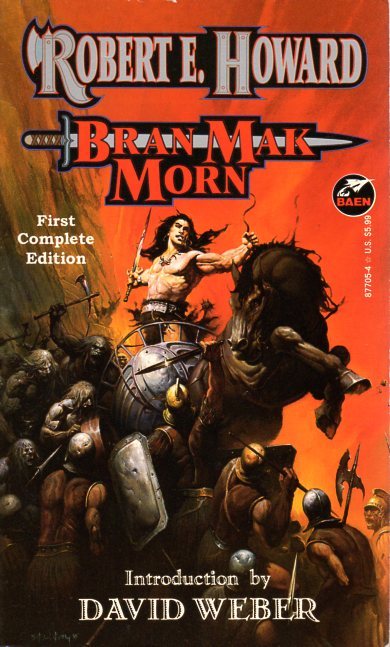
By Adrián Maldonado
I write about medieval barbarians in my legit academic work, and use this blog to explore how they occasionally escape from our powerpoint slides into the public consciousness.
I recently realized that for all my degrees, I didn’t know a thing about one of history’s most famous barbarians. It was high time I looked up Conan.

Stock image of Dark Age Europe
In my 80s childhood, Conan the Barbarian was a kind of folk character – a stock image of a beefy white guy in a furry loincloth with a giant sword. (I would probably be picturing Conan the Librarian, to be honest.) But I already had He-Man in my life, a knock-off Conan cartoon made to sell toys, though I could not have known that because the cartoon was so unspeakably awesome it would brook no questioning. Indeed, I only discovered the Schwarzenegger Conan films later on, when I was old enough to realize he had made other weird, non-science fiction films back in the Reagan era. I knew vaguely that the character was based on a book, or was it a comic book? This was before the internet, and before I could ever give a shit about a character with no good action figures.
Flash forward twenty years or so, when I am a grizzled Xennial hunched over his computer, writing about depictions of the Picts in pop culture. Immersed in terrible filmic depictions of ancient Scottish warriors (always warriors), it struck me that I had never thought about Conan the Barbarian. What kind of barbarian was he meant to be? Did his story take place in some kind of historical epoch? Were there Picts in it that I could add to my list?
Imagine my shock when I did find a Pict down this rabbit hole (or souterrain?), and he looked like this:
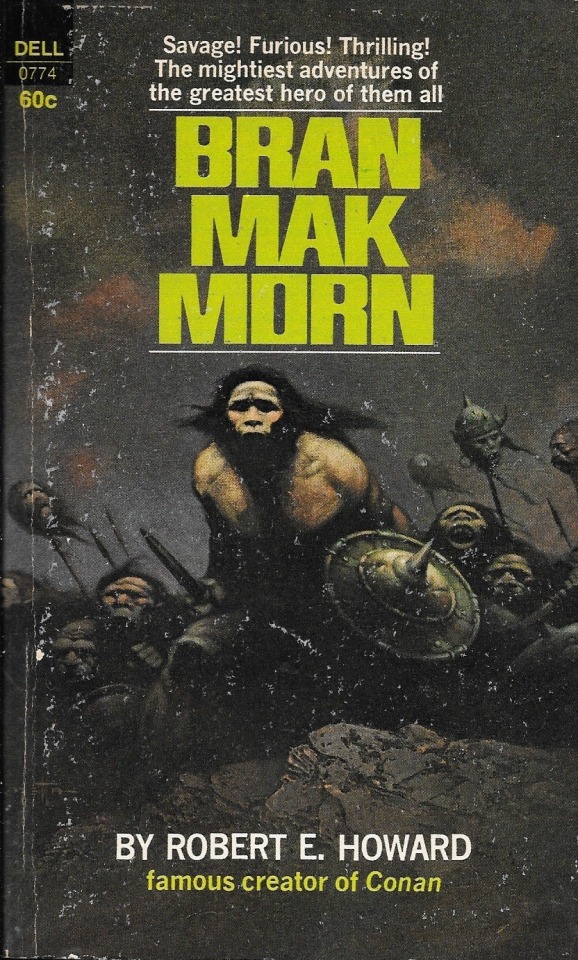
Whatever else I was working on, stopped.
***
Robert E. Howard is best known today as the creator of Conan the Barbarian. But little did I know that he was one of the first pop culture appropriators of the Picts. Indeed, he was writing about the Picts long before he even conceived of Conan. The Picts were his muse. I feel like this is important, and I may need more than one blog post to say why. But first, an introduction.
I had seen some hilarious renderings of Picts over the years, but they always fell into the usual stereotype of tattooed maniacs hurling themselves onto Roman spears.

Tattooed maniacs hurling themselves onto Roman spears (source)
This 1960s paperback collection of stories by Howard entitled Bran Mak Morn, apparently the last king of the Picts, depicted this king Pict as a Neanderthal surrounded by howling ape-men. To me, this seemed like the purest distillation of the idea of the barbarians beyond the wall as sub-human, a trope developed in Roman imperial propaganda and continually reproduced today by the Hadrian’s Wall heritage ecosystem.
The paperback was one of a series of reprints of Howard’s genre-defining pulp fantasy of the 1920s and 1930s, brought back to life in the wake of the Tolkien wave of the 60s. Closer inspection revealed that Frank Frazetta’s 1969 cover image bore little resemblance to the description of Bran himself in Howard’s tales, even if his Pictish ‘race’ was certainly of a simian variety. More on this presently. What I wanted to know first was how a Texas kid learned about the Picts in the early 20th century, and came out with this.
***
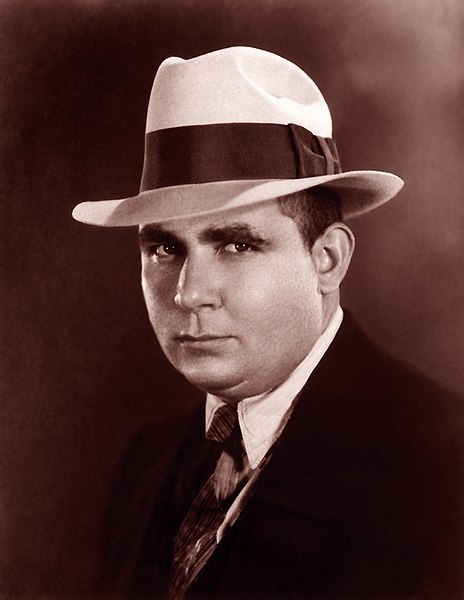
Robert E Howard had a tough childhood in his native Texas. Coming from a broken home, he moved around a lot and read books to keep himself company. In 1919, at the age of 13, his father dragged him to New Orleans while he took classes, so he squirrelled himself away in a library on Canal Street. It was there that he first read about the Picts in a book about British history. The image of a little, dark race from the north that hassled the Romans but could never be conquered fascinated him. Perhaps due to the ray of light this book gave him at a sensitive point in his childhood, the Picts remained ingrained in his mind for the rest of his short life, which he would later take in 1936, at the age of 30.
Like many other nerdy kids, he wrote stories to pass the time. In his archive were found several early writings which reveal the impact the Picts had on him. There is a school paper from 1920-23 about the Picts. The first story he ever submitted for publication was about the Picts, ‘The Lost Race’, but it was rejected by the editor of Weird Tales in 1924. He sold his first story later that year, beginning his professional writing career. A revised version of ‘The Lost Race’ was finally published in Weird Tales in 1927, introducing the world to Bran Mak Morn, a Pictish king who fought the Romans. He would go on to make several more appearances in Howard’s swords-and-sorcery tales, and the Picts eventually became one of the myriad ‘races’ in Howard’s Hyborian Age, a proto-prehistoric shared universe inhabited by Conan the Barbarian.

Bran Mak Morn by Gary Gianni (source)
Howard’s Picts are a peculiar bunch. From his first essay on them, he describes them as the remnants of the stone age inhabitants of Britain, comparing their appearance to Native Americans. In this view, they were the ‘Mediterraneans’ (as opposed to Celts or Nordics) who first brought the knowledge of farming to Britain in the Neolithic. They were eventually swept aside by the fair-skinned ‘Celtic’ race of metalworkers, at which point they were forced to mingle and interbreed with the indigenous cavemen, a barely human simian-like race. This meant that by the arrival of the Romans, the Picts had become stunted, swarthy, long-armed ape-men. All except Bran Mak Morn, their king, who had kept his bloodline pure. All pretty disgusting racial logic now, but hey, so the argument goes, it was the 20s.
Except that here it was, unfiltered and raw, in a book released during the height of the civil rights struggle in the United States. I bought this ancient artefact off of Amazon for pennies, and holding it in 2017, it felt like I’d acquired an illicit antiquity. Plenty of writers have tripped over themselves to call out and defend Tolkien and Howard regarding the racial (if not always racist) component to their mythical prehistories, so I won’t go down that route just now. But that cover image haunted me.
***
In 2005, Bran Mak Morn received a brand-new edition, the Weird Tales stories now bundled with unpublished manuscripts, fragments of Howard’s correspondence, and critical essays by Rusty Burke and Patrice Louinet. Armed with an annotated timeline of Howard’s Pictish writings, which spanned his career, and supplemented with google-fu, I was able to clarify the genesis of Bran Mak Morn.
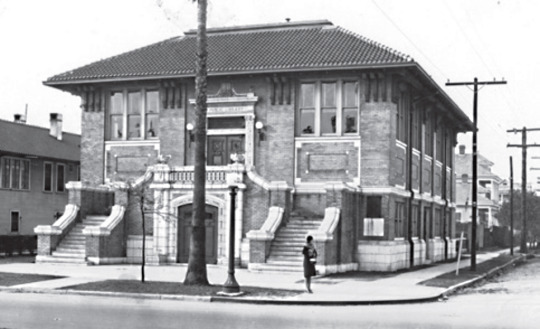
Former Canal Street public library, New Orleans, 1911 (source)
It is possible to trace the public library Howard visited when he was 13, when he first encountered a British history book and his vision of the dark, prehistoric Picts. The Canal Street public library in question must be the one that formerly stood at 2940 Canal Street at the corner of South Gayoso, opened in 1911. A photograph survives on the New Orleans library website, and Google Maps reveals it is now a Yoga studio.

Origin myths of the Picts (source)
Rusty Burke has also plausibly identified the very book that Howard seems to have read: The Romance of Early British Life (1909) by George Francis Scott Elliot. This is apparently one of the flashy, pulpy ‘Library of Romance’ published by London-based Seeley and Co, described as ‘profusely illustrated’ ‘gift books’, which included among their number volumes such as The Romance of Modern Mining and The Romance of the World’s Fisheries. The author Scott Elliot was a botanist and antiquarian, president of Dumfries and Galloway Natural History and Antiquarian Society during an apparent low point in its history.
The fairly ridiculous book in question seems to have been written for Edwardian teenage boys, and does indeed bear the DNA of Howard’s later writing on the Picts: “In very ancient times Britain had been twice conquered, first by the small, dark Picts of the Mediterranean, and later (about 2000 or 1000 B.C.) by the tall, brown-haired, Gaelic-speaking Celts (237).” The chapter on the introduction of farming to Britain is called ‘The coming of the Picts’, in which Scott Elliot explains that they have been called by several names before – Homo Mediterraneus, Basques, Iberians, Silurians, the Firbolg, the Dolmen-builders – but he calls them Picts to save on ink (80-1). He claims they are still readily identifiable in the present day, as the short, brunette people who are mostly found in towns and cities, unlike the fairer Teutons or Kelts who prefer the countryside (92-3).
Howard’s vision of the Picts was thus formulated by the equivalent of our contemporary public archaeology, an accessible potted prehistory of Britain by one of Scotland’s leading antiquaries. Why this particular image, of a dark, forgotten people without a history, resonated so deeply with him, is a subject to ponder. But he was clearly not alone in his fascination. While racial views of the past soon died out in archaeological writing, they would go on to have a tenacious grip on the fantasy world. And which of these two genres do you think has a greater influence on people’s image of the medieval past?
***
Why does any of this matter? It is a demonstration of the role of ‘the Picts’, in various guises, as the untermenschen of what you might call western folk history. The fact that a young boy in inter-war Louisiana could head to the nearest library, read about them in a cheap history book, and then build a world-beating fictional universe that is still beloved today based on this is remarkable. As I’ve spent some time documenting on these pages, that image of the Picts is still in a way with us. A recent article in the Glasgow Herald has the reporter coming to the shocking insight that the Picts were not ‘hairy savages’ after speaking briefly to a couple of scholars. I wonder if that means we are doing our job well, or terribly.
It also opens up questions about the central role of race at the origins of both archaeology and the fantasy genre, a sticky subject that will have to be the subject of future blog posts [Editor's note: now read the follow-up to this post]. In the meantime, go check out similar topics being covered over on The Public Medievalist.
And hey, why not donate to your local public library while you’re at it?
***
Follow us on @AlmostArch
Header image via Jeff Black
5 notes
·
View notes
Text
Cemeteries braced for surge in Covid-19 dead as Mexico readies to reopen
Photograph: Marco Ugarte/AP
Four generations of Enrique Ruvalcaba’s family have worked at the Mezquitán cemetery in the Mexican city of Guadalajara. None of them ever saw anything like this.
Before the coronavirus, the burial ground was open to the public, and the deceased were honoured by flower-carrying mourners and mariachis. Now the dead arrive in silence and alone.
Related: Mexico City records thousands more deaths than usual, amid doubt over official Covid-19 toll
“Only the box came, not a single relative, just the coffin,” Ruvalcaba, 32, said of the first Covid-19 burial he witnessed last month. “Absolutely everything has changed.”
The Guadalajara graveyard, which has added 700 tombs for an anticipated wave of Covid deaths, has yet to see a major increase of victims – but Ruvalcaba said gravediggers had been advised to prepare. “They’ve told us a more intense phase is coming,” he said.
Yet as Mexico’s daily death toll rises to become one of the highest in the world – a record 501 fatalities were reported on Tuesday alone – the country is simultaneously preparing to reopen and weathering a politically charged battle over the true scale of the crisis.
“We’re doing well, the pandemic has been tamed,” Mexico’s populist president, Andrés Manuel López Obrador, claimed on Thursday as he announced he would resume touring the country when a period of nationwide quarantine was wound down next week.
Workers build 700 graves at the Mezquitán Pantheon cemetery in preparation for possible coronavirus victims in Guadalajara last month. Photograph: Ulises Ruiz/AFP via Getty Images
Alejandro Macías, a leading infectious diseases specialist, said he understood and supported the need to plot out a return to some kind of normality for Mexico’s 129 million citizens.
“It’s good to have a plan and it is good for this plan to constantly put people’s lives first,” he said.
But Macías, who was Mexico’s influenza chief during the 2009 swine flu pandemic, said he was worried things were moving too fast, when the extent of the crisis remained unclear and different parts of the country were at different stages of transmission.
“The risk is that there will be another substantial rise in the number of cases and that this could cause some hospitals to collapse – and if the hospitals collapse this could put the security and governance of some regions at risk,” Macías warned.
Story continues
“In many parts of the republic the curve has barely started to rise.”
Related: US-Mexico border factories pressured to stay open despite Covid-19 risk
Macías said he suspected political pressure from López Obrador’s year-old government and the United States – which is highly reliant on Mexican supply chains – explained the authorities’ desire to promote the idea the crisis was under control.
“It is exactly like what is happening in the United States. The government there is also putting pressure on to show a certain normality and tranquillity when clearly they can’t yet say they have the situation under control” and were still suffering “terrifying” Covid figures, Macías said.
“I feel there is a great deal of political pressure – much more in Mexico than in other parts of Latin America – because Mexico’s industrial production is so tightly connected to industry in the United States. And they want to reopen but can’t do so if Mexican industry doesn’t reopen, because we are so integrated.”
Latin America’s number two economy registered its first Covid case in late February and has since recorded more than 9,000 deaths and 81,400 cases, although the government admits the true number is probably considerably higher.
One report this week found Mexico City had issued 8,000 more death certificates than usual between January and late May, suggesting a significantly higher death toll.
López Obrador, who was criticized for his initially dismissive attitude to the pandemic, has been bullish about Mexico’s response. On 26 April, with 1,351 deaths and 14,677 infections, he claimed it had managed “to tame” the coronavirus. But many are not so sure. A month after those claims, Mexico had suffered 9,044 deaths and 81,400 cases.
A worker wears a face mask in a factory in Mexico City making coffins designed to b hermetically sealed to transport corpses of people who died from Covid-19. Photograph: Carlos Tischler/Rex/Shutterstock
Macías said it was likely many more had died. “Right now we have less than 10,000 recognized deaths. But it’s very probable the true figure is substantially bigger – probably double that.”
Behind those statistics lie thousands of grieving families – some of which have lost multiple members to Covid-19.
Karlo Colín, who works at a funeral home in Mexico City, said he and his colleagues had handled 60 coronavirus cases in the last three weeks. One family had lost five members, another four. “Every week a family member dies,” Colín said.
Despite the rising death toll, many Mexicans seem in denial. Even Colín, on the frontlines of the pandemic, admitted having doubts.
“A lot of people don’t believe in the virus,” the undertaker said. “There are times where I say, how is it possible that the guy giving me the body, at the centre of the infection, doesn’t have protective equipment? Is this real or isn’t it?”
Related: ‘Hubs of infection’: how Covid-19 spread through Latin America’s markets
Adrián Carranza, a nursing student, has been conducting Covid-19 evaluations at Mexico City’s main market, the Central de Abasto – and referring suspected patients for testing. He said that many vendors remained skeptical despite the deaths of several vendors.
“They’ll say, sure, that guy over there died, but we don’t know why,” Carranza said.
Carranza and his colleagues have faced harassment at the market, where about 40% of the stalls have shut down.
A worker resumes activities at a truck part factory after it was closed for several weeks to prevent the spread of coronavirus in San Luis Potosí on Wednesday. Photograph: Mauricio Palos/AFP/Getty Images
“Because of misinformation, more than anything else, they think we’re hurting them, that we’re going to inject them with the virus,” he said. “They yell that we’re murderers.”
As Mexico prepares to reopen, Guadalajara’s gravediggers are readying themselves for the dead.
Ruvalcaba, whose father, grandfather and great-grandfather all worked in the same cemetery, called his colleagues the hidden heroes of the Covid-19 crisis.
“It’s a really noble line of work. People talk about the doctors and the nurses but nobody thinks about the people who are laying Covid’s victims to rest,” said Ruvalcaba, who has been digging tombs since he was 12.
“It’s like doctors’ work – only from the moment when the patient has gone to a better life,” Ruvalcaba added. “And someone has to do it.”
Source link
The post Cemeteries braced for surge in Covid-19 dead as Mexico readies to reopen appeared first on The Bleak Report.
from WordPress https://bleakreport.com/cemeteries-braced-for-surge-in-covid-19-dead-as-mexico-readies-to-reopen/
0 notes